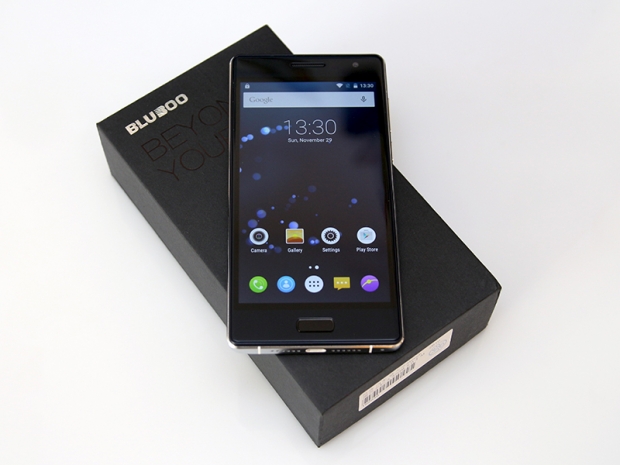Index
Review: Great on paper, but not in real life
Over the past few months, we witnessed a flood of Asian budget phablets with impressive specs over, but a number of companies are now shifting their attention to compact 5-inch models. The reason is simple: there are just too many phablets out there and smaller 5-inch models are more popular in western markets.
Bluboo’s Xtouch is one of these quasi-flagship designs. It’s a 5-inch phone based on a MediaTek octa-core processor, backed by 3GB of RAM. It’s also got ample storage in the form of a 32GB eMMC 5.0 unit. As an added differentiator, Bluboo decided to integrate a fingerprint scanner on the home button.
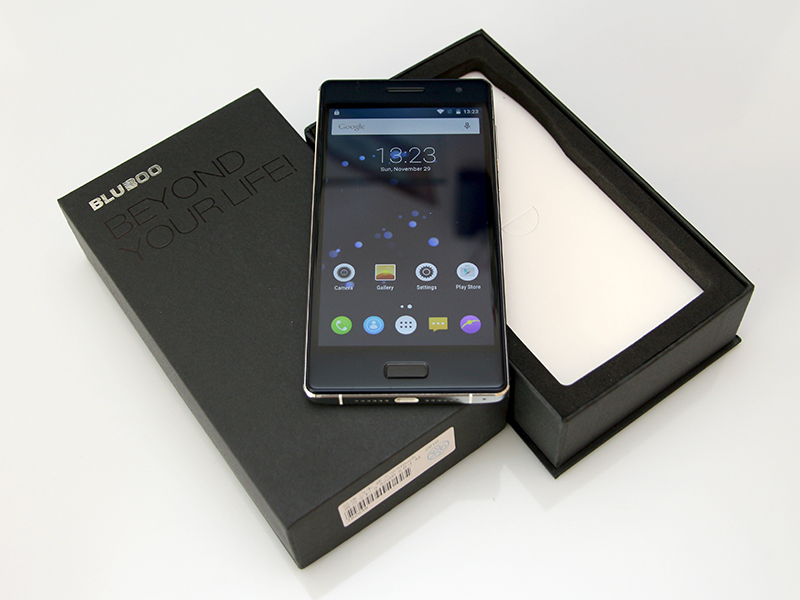
The phone boasts a 450-nit JDI 1080p display, capable of covering 95% of the NTSC colour gamut. The display is protected by a pane of scratch resistant 2.5D glass.
The Xtouch boasts 13- and 5-megapixel cameras based on Sony and OmniVision sensors respectively.
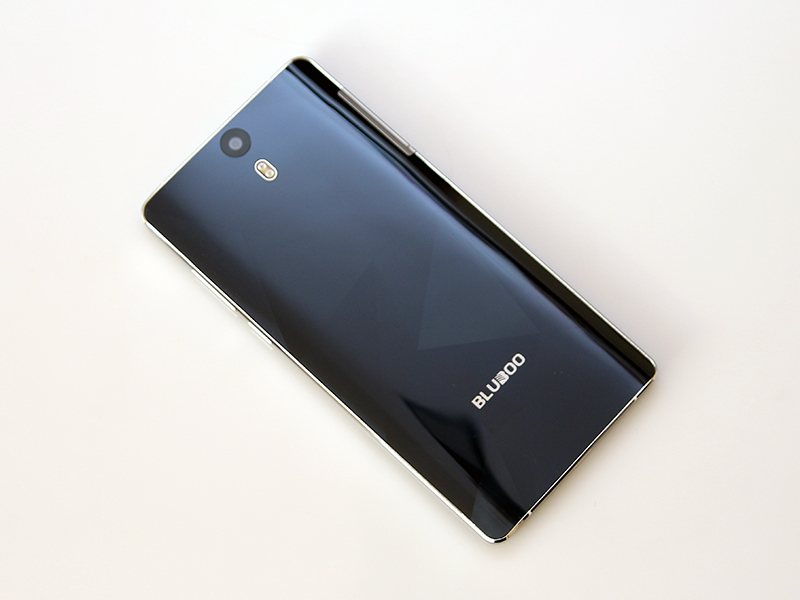
The whole package weighs 158 grams, which quite a lot for a 5-incher. However, it features a 3050mAh battery, which justifies the extra weight to some extent. Not bad for a phone that sells for $179 with free shipping, but let's take a closer look.
Design and Build Quality
Just a couple of years ago, Chinese phone makers tended to copy Apple, Samsung and other big vendors. Some of them still do, but the Bluboo Xtouch is inspired by another Chinese phone – the Xiaomi Mi4.
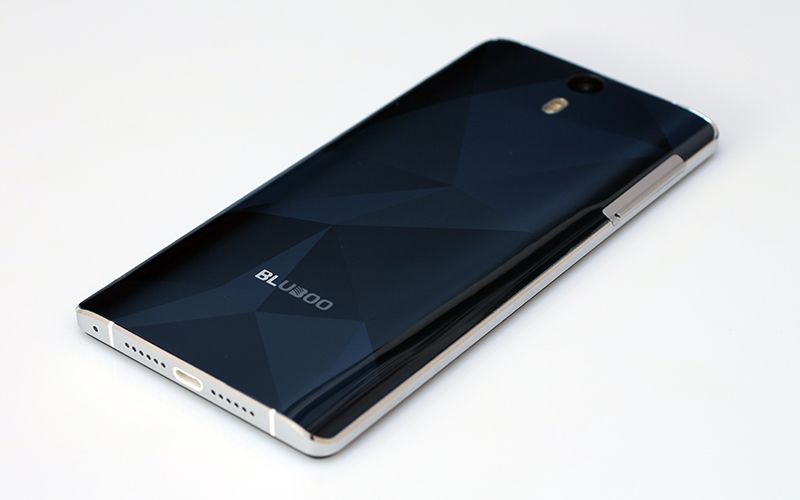
The dimensions are almost identical, as is the design, with a curved back and alloy frame. The biggest differences on the Xtouch are the 3D textured back and the physical home button with integrated fingerprint scanner. The phone also boasts slightly curved 2.5D glass on the front.
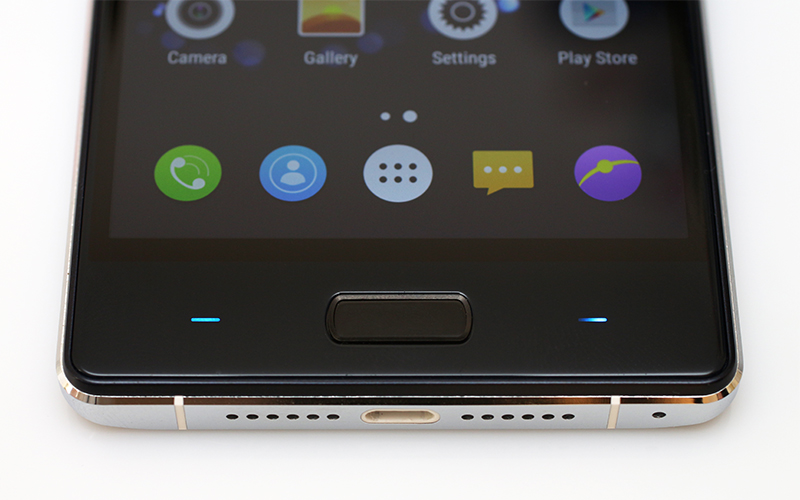
The phone measures 143 x 71 x 8mm. It’s a few millimetres taller than Xiaomi’s 5-inch line-up and we assume the integration of a physical home button had something to do with this.
The metal frame is just 5.5mm thick at the sides, and the curved front and back help create the illusion of a somewhat thinner device. At 8mm, the Xtouch isn’t the thinnest phone around, but the curved edges make it look and feel a bit sleeker.

The power button and volume rocker are located on the right.

On the left you’ll find an oversized card tray, which can accommodate two SIM cards and a MicroSD card at the same time.

The side firing speaker is located at the bottom (nope, these aren’t stereo speakers, it just Bluboo’s way of keeping the design symmetrical).

The rear camera and dual-tone LED flash are centred.

The 3.5mm audio jack is on the top.
A problem we usually encounter when dealing with quasi-flagship devices is that they don’t exactly feel like proper flagships. After all, these are $150-250 phones and it’s clear they can’t feel as good as a high-end device with an Apple, Samsung or HTC logo.
In this respect, Bluboo was on the right track, but it managed to botch it. The choice of materials is ok and the finish feels premium. The Xtouch doesn’t look or feel like a $170 phone, which was sort of the point, but there is a problem.
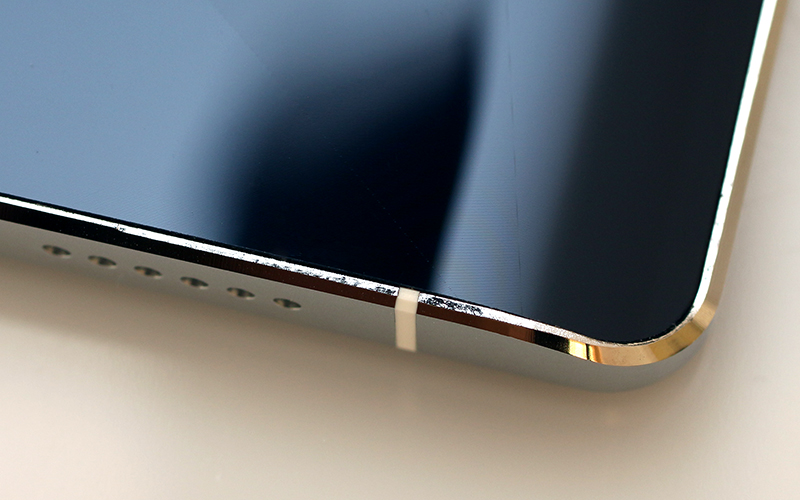
The CNC machined frame feels solid, but the edges on the back are jagged in three different spots. They’re sharp, too, but not enough to cut yourself. Upon closer investigation, we noticed that the top right corner of the device is uneven and slightly curved, which is probably what caused the CNC mill to “miss” the jagged spots. We are not sure if we received an early review sample, but nonetheless this issue is indicative of poor quality control. Some may argue it’s an aesthetic glitch, but it’s definitely not reassuring. Besides, we’ve seen even cheaper devices with impeccable build quality.

The back sports a glossy finish and doesn’t handle fingerprints well. It is also prone to scratches. The back feels sturdy despite the smooth finish, although we fear the camera is a tad too exposed.

Overall, there’s a lot to like from a purely aesthetic perspective. The Xtouch tries to look like a premium device and in many respects it manages to pull it off. Unfortunately, the build quality is just not there.
Specs and Performance
Like many Chinese mid-range phones, the Bluboo Xtouch is based on MediaTek silicon. The MT6753 is the slowest 64-bit MediaTek octa-core, but it’s still a decent performer, roughly on a par with the Qualcomm Snapdragon 615. The same chip is used in loads of phones launched in Q3, including the Meizu M2 Note.
Let’s take a closer look at the specs:
- SoC: MediaTek MT6753, 28nm HPM
- CPU: Eight 64-bit Cortex-A53 cores clocked at up to 1.3GHz
- GPU: Mali-T720MP3 clocked at up to 700MHz
- RAM: 2GB LPDDR3 single channel
- Storage: 32GB internal eMMC 5.0 storage, microSD slot up to 64GB
- Display: 5-inch 1920x1080 JDI display, 441ppi, 450 nits, Gorilla Glass 3
- OS: Android 5.1 (near-stock)
- Rear camera: 13-megapixel Sony IMX 214, f/2.0 aperture, dual-LED (dual tone) flash
- Front facing camera: 5-megapixel OmniVision OV5648
- Battery: 3050mAh, non-replaceable
- Dimensions: 143 x 71 x 8mm
- Weight: 158 g
- Wi-Fi and Bluetooth: 802.11 a/b/g/n/ac, dual-band Wi-Fi and Bluetooth 4.0, LE
- Sensors: Direction, Light, Compass, Acceleration Proximity, Fingerprint Scanner, GPS, AGPS, GLONASS
- SIM card: dual SIM (micro SIM), dual standby
- Network support:
2G: GSM 850MHz, GSM 900MHz, GSM 1800MHz, GSM 1900MHz
3G: WCDMA: 850 / 900 / 1900 / 2100MHz
4G: FDD-LTE: 800 / 1800 / 2100 / 2600MHz (Make sure to check regional compatibility prior to making a purchase)
While the MT6753 can take on the Snapdragon 615, it’s no match for faster MediaTek processors like the Helio X10, or the “old” MT6752. The rest of the package looks promising: 3GB of RAM and 32GB of speedy eMMC 5.0 storage wouldn’t look out of place on a much more expensive device device, let alone a mainstream phone like the Xtouch.
Aside from the fingerprint scanner, ac WiFi, and the ability to accommodate two SIM cards and a microSD card at once, there’s really not much to talk about. This is an average mainstream device in terms of specs and pricing.
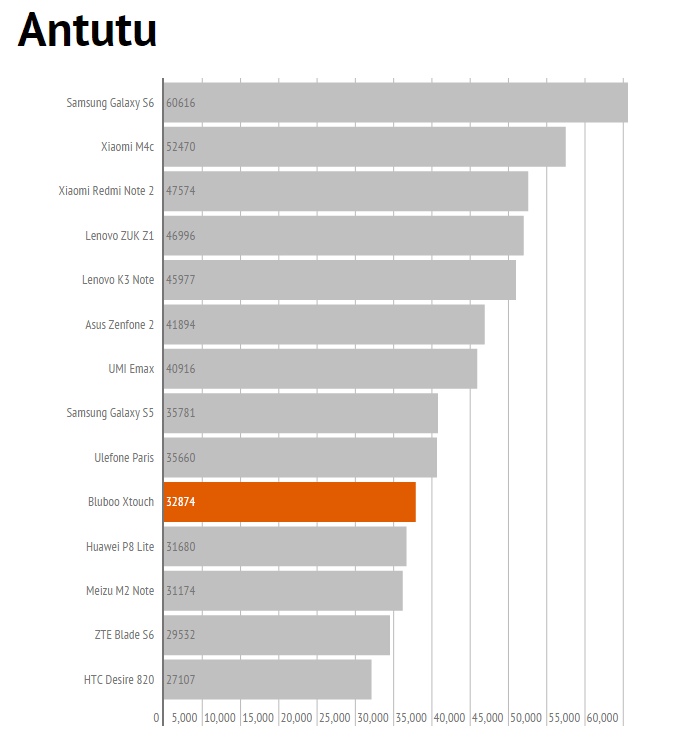
In Antutu, the phone manages to beat Snapdragon 615 devices.
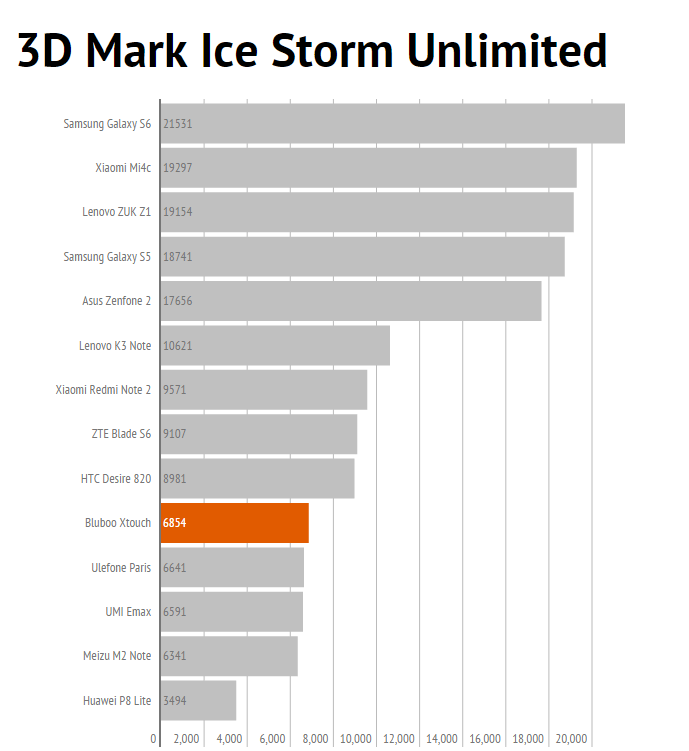
The 3D Mark score is not impressive, but that's what we've come to expect from the MT6753.
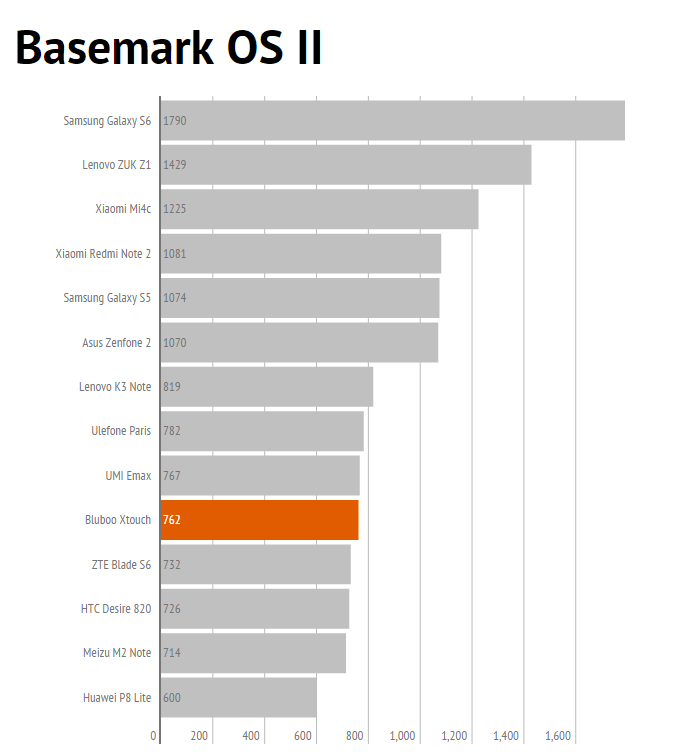
Basemark results are average, the MediaTek chip beats the SD615 once again.
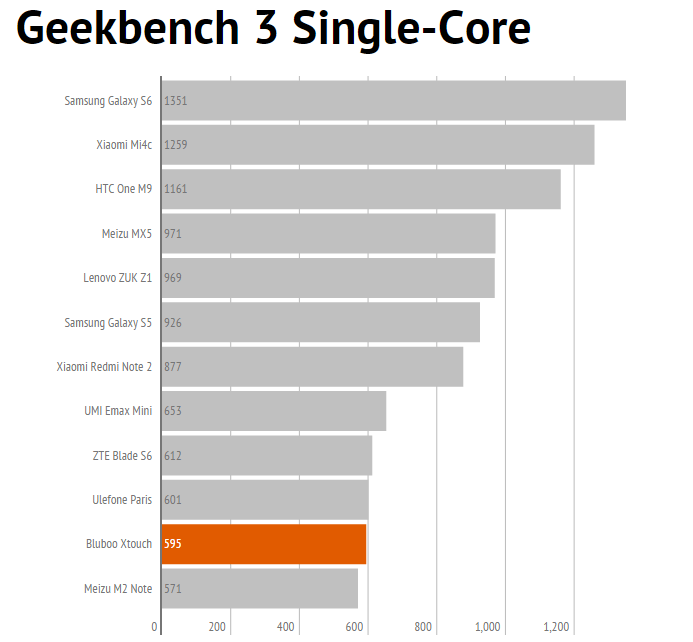
Geekbench single-core scores are unimpressive, but the multicore results aren't bad.
Audio, Display and Camera Quality
The 1080p panel comes from DJI, and it’s pretty good. There’s really nothing to complain about. It might not be as bright as panels in big-brand flagships, but it’s a very good display nonetheless.
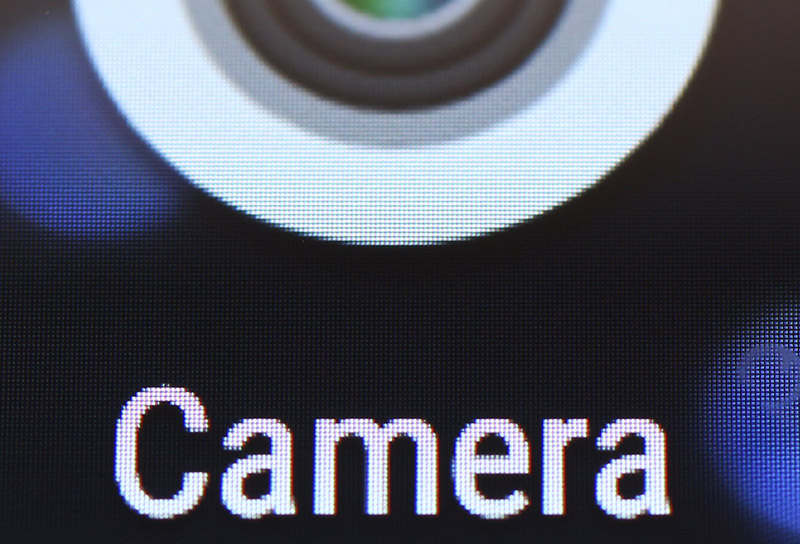
Viewing angles and colour reproduction are good, brightness is not an issue in most situations. MediaTek’s Miravision technology can be used to fine tune the display.
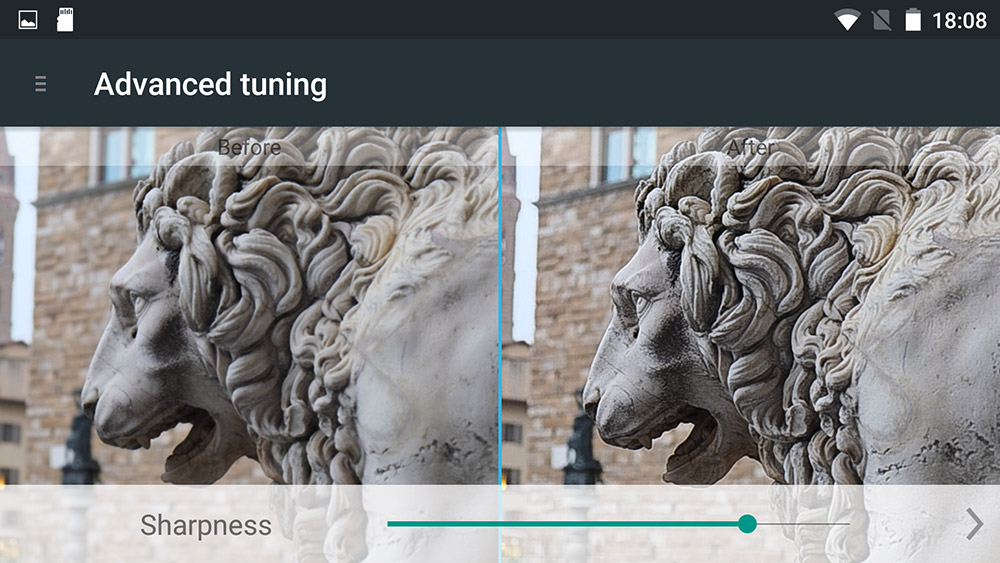
The 2.5D curved design gives the phone a sleek look, although we are not entirely sure about the scratch resistance of the panel.

Audio quality is average. There is no noise cancelling microphone and the side firing speaker is not very powerful. Call quality is good, the earpiece is loud enough, but we’ve seen better.
So what about the camera? It’s based on Sony’s IMX214 sensor, probably the most popular imaging sensor on the planet. The camera sports an f/2.0 aperture, which is what we’ve come to expect from devices in this price segment.

With that in mind, we were hoping for some good results, but the Xtouch was a disappointment. We suspect the optics aren’t as good as Bluboo would have us believe, so practically all images lack sharpness.
We also noticed some light bleed and ghosting in certain situations, probably owing to the design of the camera cover.

Outdoor shots were a mixed bag. The camera struggles with sharp details and the HDR mode is sluggish. It helps, but it also results in a fair amount of ghosting, and it degrades the details even more.

Indoor daylight shots were average at best. It’s obvious that the optics just can’t keep up with the sensor. We’ve tested loads of IMX214 phones in the same setting and practically all of them delivered superior results.
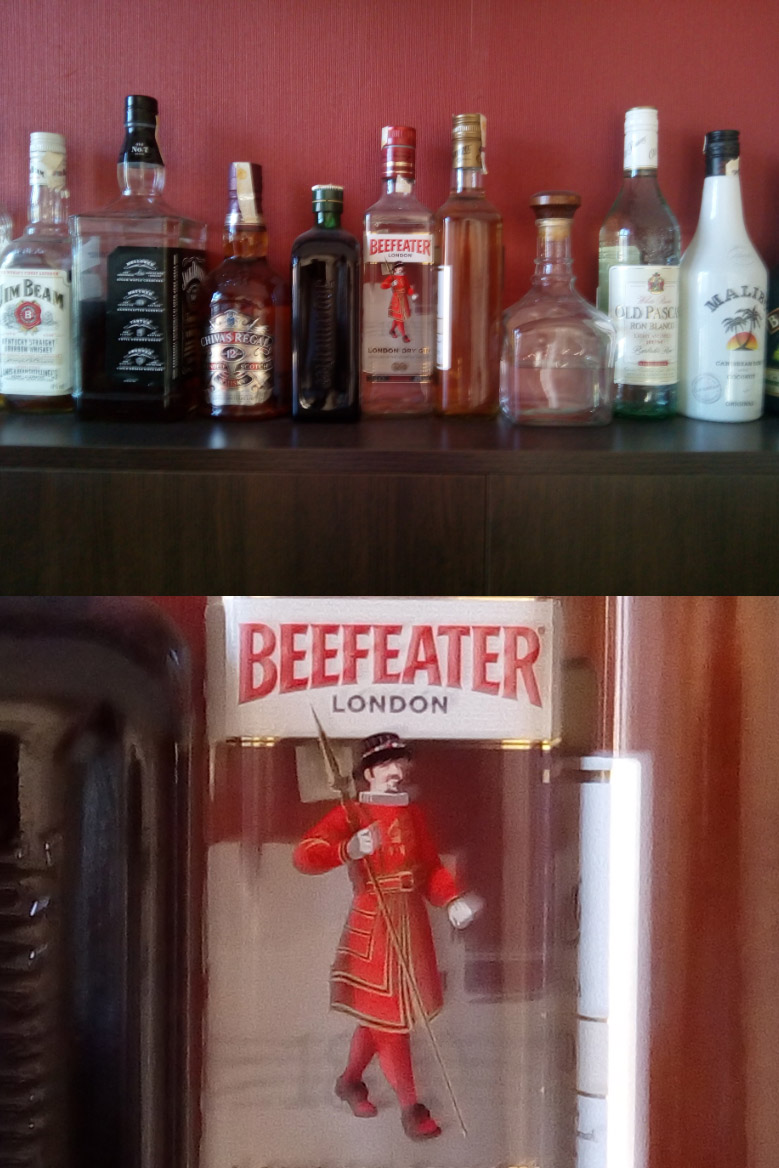
Night shots under incandescent lighting were more of the same: loads of soft edges and blurred details.

We’ve come across camera glitches on a lot of phones, but in most cases they were software related (and sometimes they were addressed with OTA updated). However, we are dealing with a hardware issue here. Bad optics can’t be fixed with a simple software update.
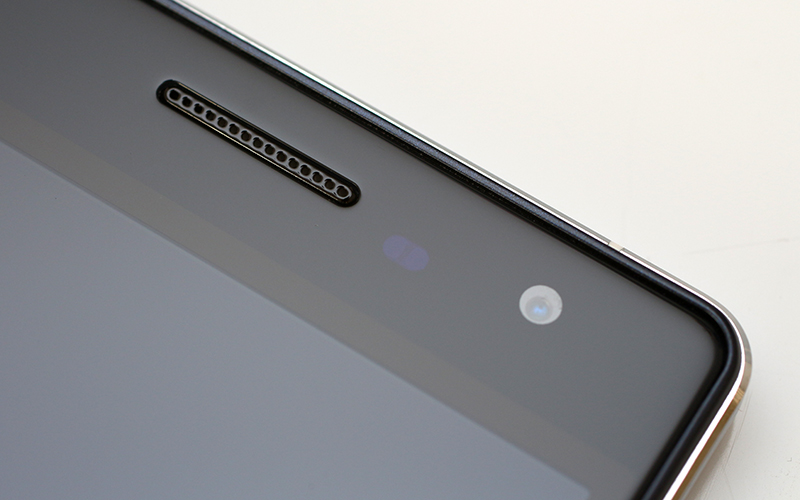
The front facing camera is based on a 5-megapixel OmniVision sensor and it’s quite good. Of course, we’ve seen better on flagships, but this one is better than expected. It features autofocus and HDR. It's surprising that the front camera performs so well considering the issues we encountered with the rear snapper.
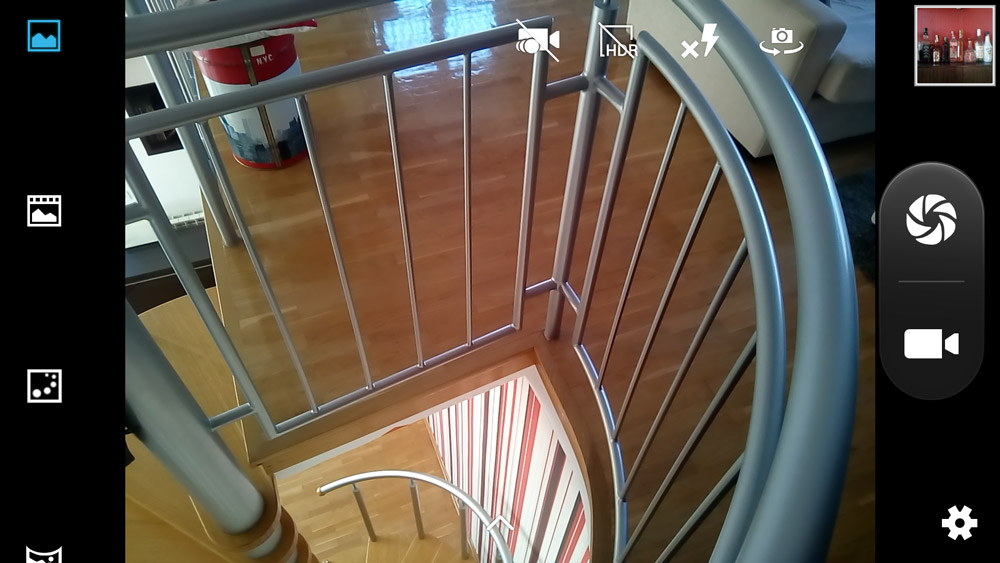
The MediaTek camera app is a departure from stock Android, but it’s still relatively close. There aren’t that many bells and whistles, apart from the pointless ability to interpolate the back and front camera to 16 and 8 megapixels respectively. The upside is that the camera app is very fast and responsive, which is not the case on many cheap devices. The viewfinder is just as fast as you’d expect on a big-brand device.
All in all, the Bluboo Xtouch doesn’t do well in the imaging department. The IMX214 sensor is getting old, but it’s still a good choice for budget devices and can deliver good results if it’s implemented properly (with quality optics). Unfortunately, the optics on the Xtouch simply fail to utilise the full potential of the Sony sensor.
The front facing camera is above average for this price segment, there’s nothing to complain about. We like the fact that it’s not a fixed focus unit, which is not something we usually see on cheap phones.
OS, UI and Everyday Use
One issue we often encounter on budget phone reviews is poor UI design. Small companies want to make their phones different, so they go about skinning Android and making a mess of it. Others use stock Android instead, which is probably the way to go.
Bluboo decided to play it safe and keep its skin simplistic and close to stock Android 5.1. The icon pack is different, so most icons are round. It’s a matter of taste, but we think the overall appearance is ok. A lot of Cyanogen and MIUI themes feature the same round icon look.

Of course, you can always go for a different launcher in case you don’t like it.
Apart from the icons, this is more or less stock Android 5.1. The good old app drawer is still there. You won’t have any trouble navigating the menus and setting everything up, especially if you ever used a Nexus device. Not a lot to report in the OS and UI department, so let’s check out the rest of the package.
We already mentioned MiraVision, which can be a very useful addition to mainstream phones, allowing the user to fine-tune the display.
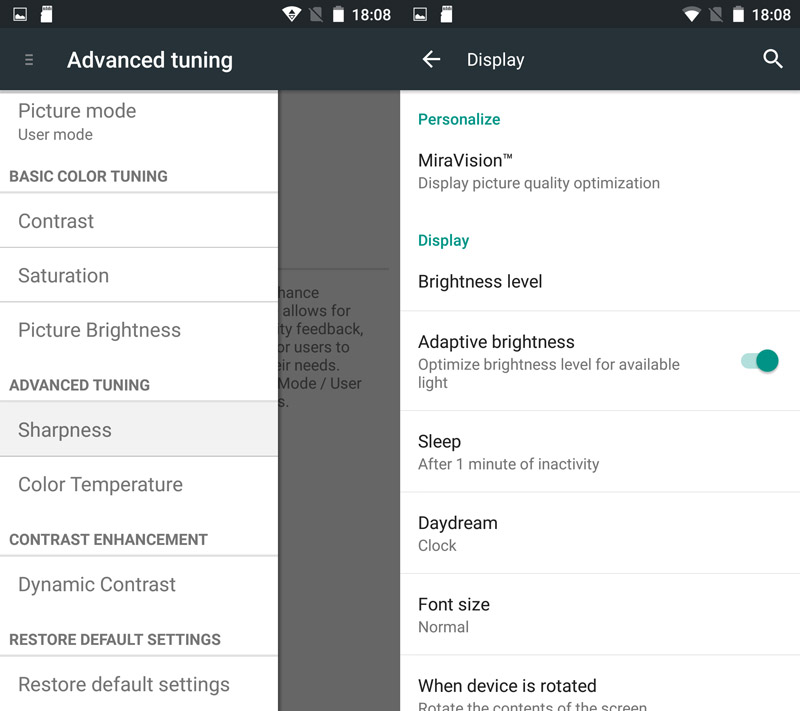
The fingerprint scanner is Bluboo’s key market differentiator and the fact that the phone owes its name to it (Xtouch) means the company is taking it seriously. When it comes to cheap phones with fingerprint scanners, we tend to be sceptical, but this time around, Bluboo managed to do a good job.
The 360-degree sensor is reliable and fast. In fact, it’s no worse than the one we had a chance to try out on the Lenovo ZUK Z1, which costs twice as much. A lot of vendors choose to place fingerprint scanners on the back, but we feel the right place for them is at the front (Apple does it, end of discussion).
The fingerprint sensor unlocks the phone in less than half a second and we have no complaints about reliability. It works quite well and it’s no worse than fingerprint sensors found on much more expensive big-brand devices. Nicely done.
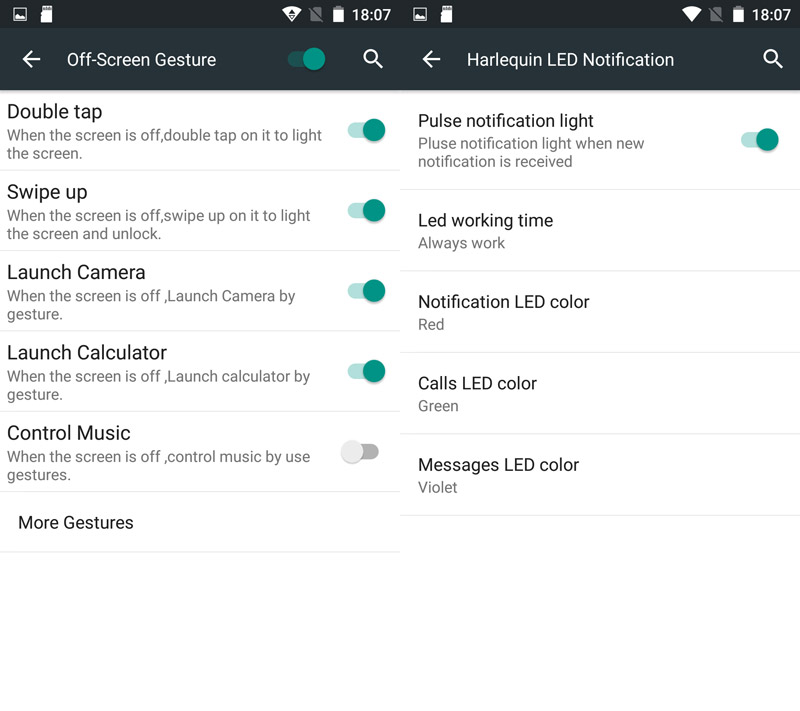
The phone also supports a number of gestures, although many of them are gimmicky and rather slow. We’ve seen better gesture implementations on other devices. Double tap to wake functionality is on board as well.
With a 3050mAh battery and a 1.3GHz processor, you’d expect relatively good battery life. A lot of phablets with bigger screens and faster processors use similar capacity batteries and get away with it. The Xtouch does rather well, but we expected more. If you are really careful, you can squeeze up to two days out of the battery, and even heavy users and should have some juice left in the morning if they forget to charge their phone. However, we’ve seen similar results from bigger devices with 3000mAh batteries, namely the Meizu M2 Note, with a 20% bigger screen. It’s possible that Bluboo didn’t optimize the system as well as Meizu.
Bluboo says the phone uses MTK fast charging technology, giving you an hour of talk time for 10 minutes of charging. The company doesn’t try to oversell the battery capacity, saying that heavy users should get all-day battery life.

We had no significant problems with GPS reception.
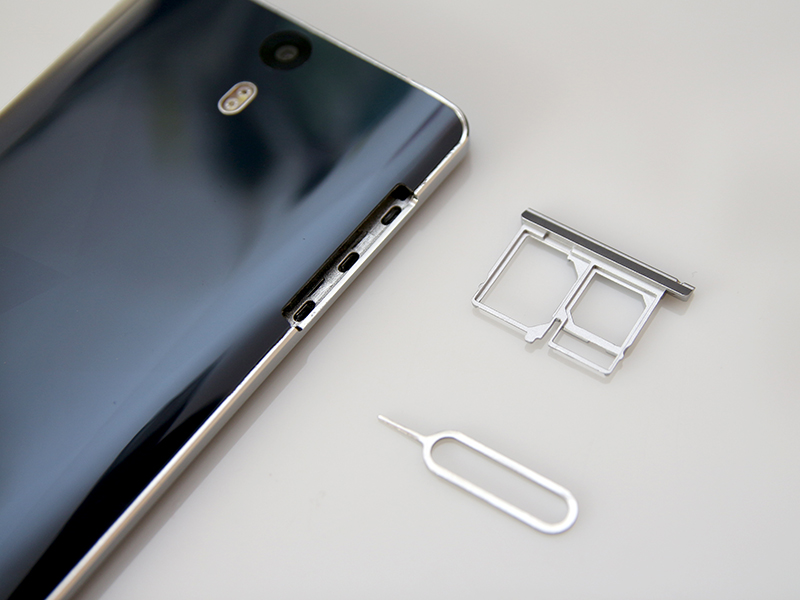
That's one huge card tray. It can accomodate two SIM cards and a microSD card at the same time.
Conclusion
Bluboo is a small company, specialising in high battery capacity budget phones, with some wearables on the side (the company recently announced its first Android Wear watch, which should ship early next year).
The Xtouch is Bluboo’s quasi-flagship, so it is supposed to look and feel a bit more upmarket than the rest of its line-up. It tries to give off a premium vibe, but quality control is clearly not as good as it should be. The sharp CNC machined edges could do with some polish, literally. The second problem is the camera – we’ve come to expect much better results from Sony’s IMX214 sensor and Bluboo clearly dropped the ball in the optics department.
The underlying hardware is rather good. The MT6753 is a capable chip, although some may argue that a Helio X10 would have be a better fit for a device with 3GB of RAM and 32GB of integrated storage.
On paper, the Xtouch looks like a good device for the money, and a couple of things make it stand out (802.11ac wireless, fingerprint scanner, 32GB of storage). Unfortunately, in real life, it fails to live up to expectations. Poor quality control and a subpar camera drag it down. We’d happily trade the excellent fingerprint scanner for a better camera and proper quality control.
The outfit clearly tried to bolster its brand with a competitively priced smartphone, with an eye catching design and a good spec sheet, but it simply cut too many corners along the way.
Bluboo Xtouch Pros and Cons
Pros:
- Reliable and fast fingerprint scanner
- 3GB of RAM and 32GB of fast eMMC 5.0 storage
- Can accommodate two SIMs and a microSD card at once
Cons:
- Build quality issues
- Worse than expected battery life
- Subpar camera optics

